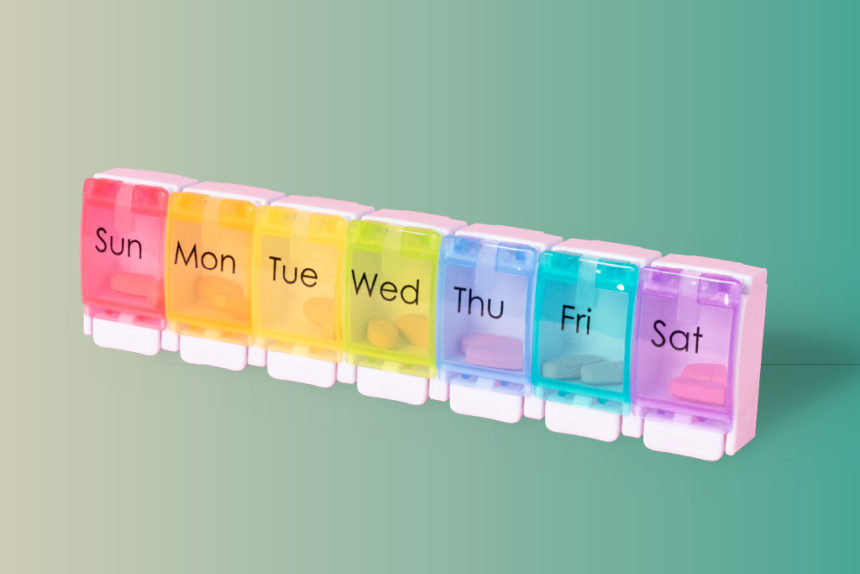Pear Therapeutics is all but guaranteed to launch as a well-funded company when it closes a reverse merger with a blank-check company later this year. What’s less certain is whether the firm will be able to achieve its lofty revenue forecast, if the math behind how it’s pricing its products and getting reimbursed for them is any indication.
Pear, which received U.S. Food and Drug Administration approval for its first app in 2017, built the first end-to-end platform for prescription digital therapeutics (PDTs). It now markets three FDA-authorized apps to treat psychiatric disorders and needs to get them in the hands of doctors and on the formularies of health plans.
“In 2021, we achieved great progress in forging the commercial model for the category and executing in line with our guidance,” said Corey McCann, Pear’s president and CEO, in a statement.
But absent more capital, Pear can only scale that model so far. Coming not a moment too soon, then, is Pear’s special purpose acquisition corporation (SPAC) deal with Thimble Point Acquisition Corp., which values the company at a unicorn-worthy $1.6 billion. Thimble filed for an IPO in January, part of a busy first quarter that saw a record volume of such activity in digital health and biotech.
As the digital-medicines pioneer teases out more details about its business, however, some of them lead to more questions. Consider the math behind Pear’s average sales price in relation to its revenue.
Pear had previously disclosed that its main product – reSET, a 90-day prescription app that provides cognitive behavioral therapy for the treatment of substance use disorder – would carry a $1,665 list price. Pear’s documentation suggests that it can charge a premium owing in large part to its prescription-needed status and FDA seal of approval.
On Monday, Pear reaffirmed its guidance of a mere 12,500 prescriptions and $4 million in revenue for 2021. If the company is actually commanding $1,665 per unit, then it is only booking a very small fraction of units reimbursed. Otherwise, its revenue would be much higher.
Alternatively, for the unit-times-price calculus to add up, one would have to assume that Pear is rebating or discounting units significantly below the per-unit price in order to secure broader coverage – or giving away its app most of the time because it’s being denied coverage.
Similarly airy is the number of insured patients Pear says are eligible to receive the app as a covered benefit. The number the company touted on Monday – 30 million covered lives by year’s end, with more than 30 organizations providing access to its apps by either listing on a formulary as a covered benefit or purchasing products in bulk – may paint an overly rosy picture.
One reimbursement expert explained to MM+M that health plans serving employers often sort the “covered lives” metric into two categories: Those where the plan is acting as an administrator and those where the plan is actually holding risk and has control. In the former, employers need to opt-in to the coverage.
Other digital health companies, such as Livongo, disclose such splits. Pear does not.
All of which suggests an uphill climb for Pear to hit its near-term forecast. Pear should easily reach 12,500 prescriptions and $4 million this year, but reaching 150,000 prescriptions and $125 million in revenue, which Pear has projected by 2023, will be quite a feat, It would amount to a 3,025% increase in a two-year period.
Enter Thimble Point, the SPAC whose stockholders are set to vote on the combination with Pear on November 30. Following the completion of the reverse merger, Pear will have access to gross proceeds of around $450 million, including $276 million in cash and $175 million from private investment in the stock, including $50 million in backstop funding announced Tuesday. Pear’s existing investors include Softbank, Novartis and Jazz Venture Partners.
The cash will go toward scaling up the company’s commercialization effort. Back in 2018, Novartis’ generics unit, Sandoz, signed on to lead the global launch of Pear’s two lead products, reSET and reSET-O, which is indicated for the treatment of opioid use disorder. About 18 months later, Sandoz backed out of the deal, returning commercial rights to Pear (although Novartis remains an investor).
The Sandoz pullout paved the way for Pear to build its own bespoke commercial team to market reSET, reSET-O, chronic insomnia app Somryst and others that may follow from its pipeline. Pear seems to have spent the year doing just that.
Pear’s progress with both government and commercial payers “give[s] us great confidence that PDTs will become mainstream medicine sooner than we expected,” added Thimble Point president and CEO Elon Boms in the statement.
Still, as McCann has said he subsequently realized, putting software out in the market requires a totally different mindset than marketing a pill. And with PDTs still a nascent class, the playbook for selling into physicians and insurers is anything but straightforward.
As a result, it’s not unreasonable to predict that Pear may issue downward guidance after the lock-up period on its SPAC deal closes, given how aggressive its two-year projection is relative to current actual reimbursement rates.
Pear did not respond to a request for comment.








